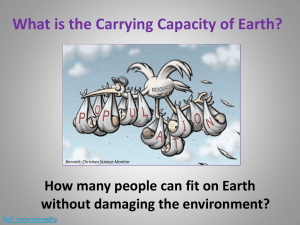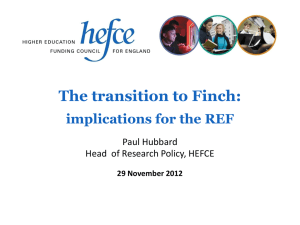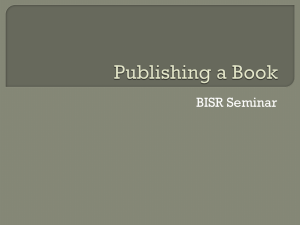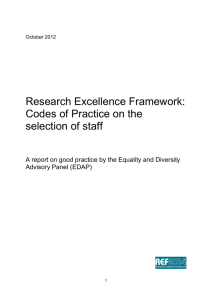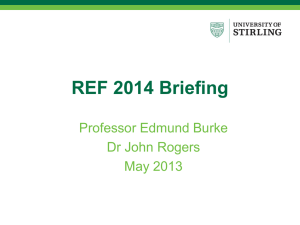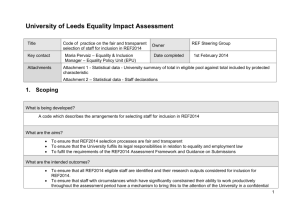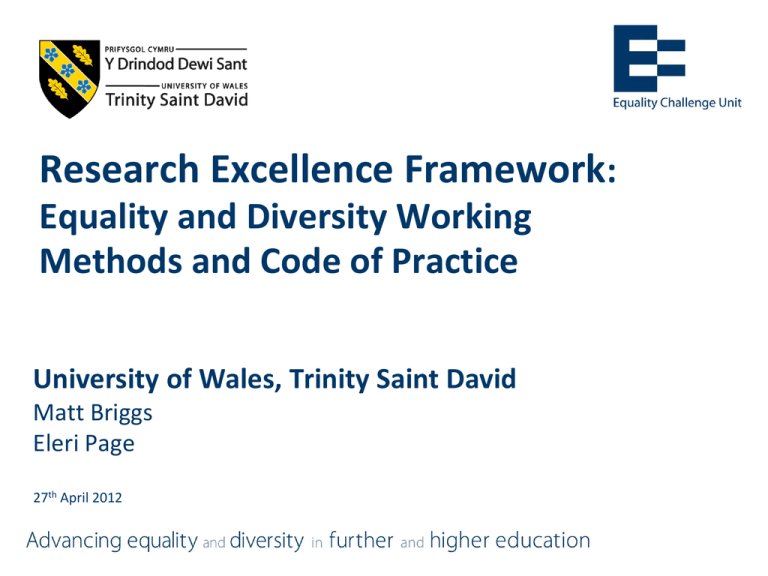
Research Excellence Framework:
Equality and Diversity Working
Methods and Code of Practice
University of Wales, Trinity Saint David
Matt Briggs
Eleri Page
27th April 2012
Context and aim of training
= Funding bodies have embedded equality and diversity
requirements into the REF.
= UWTSD required to develop and work to a REF Equality
and Diversity Code of Practice:
‒ To help ensure UWTSD fulfils obligations under
equalities and employment law (Equality Act 2012).
‒ To ensure staff eligible for submission are treated
fairly and are not discriminated against.
‒ To ensure transparency, consistency, accountability
and inclusivity in the selection process.
This session: outline of the REF
Working Group’s methods
= How ‘protected characteristics’ must be treated in
calculating reductions in outputs:
-
Individual Staff Circumstances Disclosure Form.
Equality and Diversity Sub-group.
Data protection.
Tariffs for non-complex circumstances
Tariffs for complex circumstances
<<<Key Difference between Quality and Equality >>>
Implications for your role
= Understanding and observing institutional REF policies
= If involved in the development of policies for the selection
of staff ensuring that equality has been considered in the
development of policies and procedures
= Ensuring decisions on selection are purely based on
research quality and not a staff members personal
characteristics
= Being aware of circumstances that may entitle staff to a
reduction in research outputs
= Considering equality provisions when discussing REF
submissions with staff
Tariffs available for a reduction in
outputs
= “As a key measure to support equality and
diversity in research careers individuals may be
returned with fewer than 4 outputs, without
penalty in the assessment, where their
individual circumstances have significantly
constrained their ability to produce 4 outputs or
work productively throughout the assessment
period”
= 1 output minimum
= 4 outputs maximum
Individual characteristics recognised and
protected in REF:
= Age
= Disability & Ill health
= Caring responsibilities
(children, disabled and
older people)
= Gender reassignment
= Marriage & civil
partnership
= Pregnancy & maternity
= Race
= Religion & belief
= Sex (including
breastfeeding)
= Sexual orientation
= Welsh language
= Paternity and adoption
= Part-time and fixed-term
employment status
= Early career researchers
Disclosure of Individual Staff
Circumstances.
=
=
=
=
=
=
Individual Staff Circumstances Disclosure Form:
23rd April, circulated to all research active staff
Return by 3rd May.
Letter describing process.
Approved by ECU / EDAP.
Resubmit if circumstances arise until Oct 2013.
= Data protection:
= A statement and declaration is included on the
Disclosure form. Data will be limited to used for REF
purposes as outlined in the REF E&D CoP (S18)
Ensuring confidentiality
= Internally:
=
Sensitive data will be limited internally to the Equality and
Diversity Sub-Group.
= A request to discuss these circumstances with Human Resources
can be made on the disclosure form.
= Externally:
=
Sensitive data in ‘clearly defined circumstances’ will be seen by
the relevant REF sub-panel, REF panel secretariat and REF Team.
= Sensitive data in ‘complex circumstances will be seen by EDAP,
REF Main Panel Chairs, and REF Team.
= If necessary, data may be shared with institutions with whom
joint submissions are made.
Individual staff circumstances and reduced
research outputs
Panel criteria allow for reduction in research outputs in relation to:
1. Clearly defined circumstances
= Clear period/s of leave during the REF period
= Part time working
= Early career researcher
Clearly defined circumstances
Table 1.
Table 2.
Complex Circumstances
2. More complex circumstances:
= Allows for disruption to research of an ongoing or sporadic
nature during the REF period due to an equality related reason
although may include a clearly defined periods of leave.
=
=
=
=
Disability.
Ill-health or injury.
Mental health conditions.
Constraints due to pregnancy, maternity, paternity, adoption
or childcare.
= Other caring responsibilities (e.g. disabled parent or spouse).
= Gender reassignment.
Reductions for complex circumstances
= Collected confidentially in form REF 1b:
= Estimate of how many months absent or significantly ..
….constrained by the protected characteristics.
= Reduction calculated by E&D Sub-group on basis of
….Table 2.
= Requests for complex circumstances considered by the
…REF Equality and Diversity Advisory Panel.
= Chairs, REF WG, E&D Committee, Director of HR, REF PM
= Sub-Panels will be informed of the decision.
= Worked examples on ECU website.(www.ecu.ac.uk).
Activity 2: Identifying Clearly Defined &
Complex Circumstances
1. Identify which of the 6 scenarios are
Cleary Defined Circumstances and which
are Complex Circumstances
2. Calculate reduction in outputs for Clearly
Defined
• Refer to Annex 2 of REF ED COP
• Refer to tables 1 & 2
Activity 3:
Recognising Complex Circumstances
For each of the four scenarios:
1. Do you have any concerns?
2. How would you advise the member of
staff?
3. Would they be eligible for a reduction in
outputs?
Activity 4:
Calculating Complex Circumstances
For each of the 4 scenarios:
1. Determine the number of outputs that are likely to be
required.
•
•
Consider the overall period of time that ability to
conduct research was affected (i.e. the effects on the
research) and absence from work.
Effectiveness of reasonable adjustments that have
been put in place to support the researcher.

